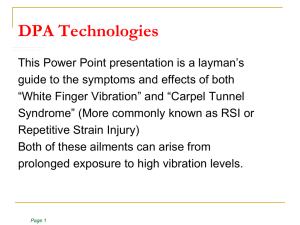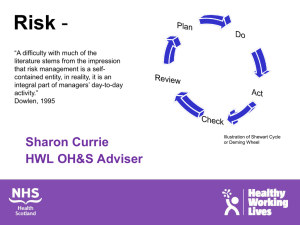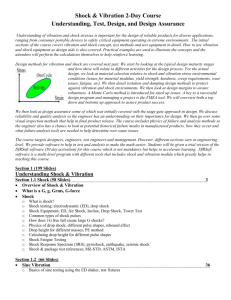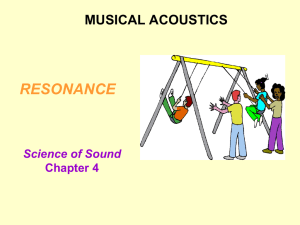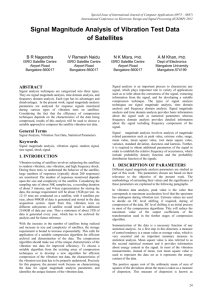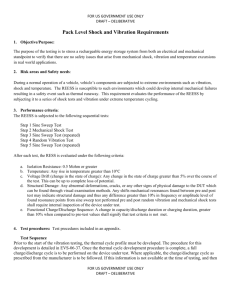Understanding Shock & Vibration by Dr. Alec Feinberg Take our On
advertisement
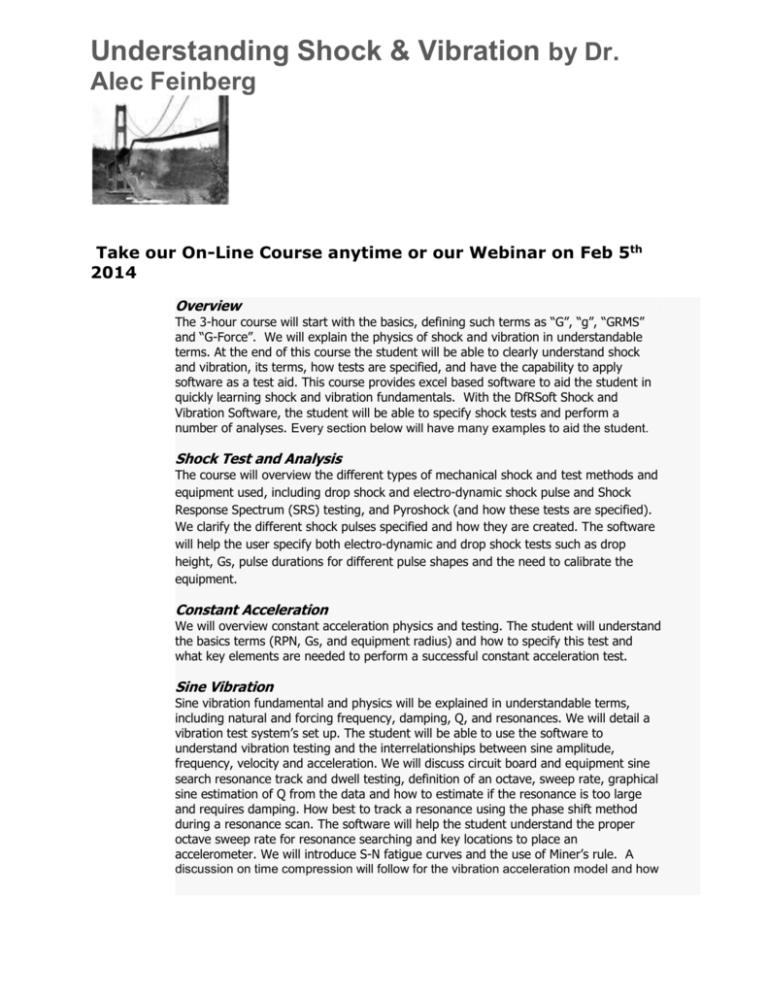
Understanding Shock & Vibration by Dr. Alec Feinberg Take our On-Line Course anytime or our Webinar on Feb 5th 2014 Overview The 3-hour course will start with the basics, defining such terms as “G”, “g”, “GRMS” and “G-Force”. We will explain the physics of shock and vibration in understandable terms. At the end of this course the student will be able to clearly understand shock and vibration, its terms, how tests are specified, and have the capability to apply software as a test aid. This course provides excel based software to aid the student in quickly learning shock and vibration fundamentals. With the DfRSoft Shock and Vibration Software, the student will be able to specify shock tests and perform a number of analyses. Every section below will have many examples to aid the student. Shock Test and Analysis The course will overview the different types of mechanical shock and test methods and equipment used, including drop shock and electro-dynamic shock pulse and Shock Response Spectrum (SRS) testing, and Pyroshock (and how these tests are specified). We clarify the different shock pulses specified and how they are created. The software will help the user specify both electro-dynamic and drop shock tests such as drop height, Gs, pulse durations for different pulse shapes and the need to calibrate the equipment. Constant Acceleration We will overview constant acceleration physics and testing. The student will understand the basics terms (RPN, Gs, and equipment radius) and how to specify this test and what key elements are needed to perform a successful constant acceleration test. Sine Vibration Sine vibration fundamental and physics will be explained in understandable terms, including natural and forcing frequency, damping, Q, and resonances. We will detail a vibration test system’s set up. The student will be able to use the software to understand vibration testing and the interrelationships between sine amplitude, frequency, velocity and acceleration. We will discuss circuit board and equipment sine search resonance track and dwell testing, definition of an octave, sweep rate, graphical sine estimation of Q from the data and how to estimate if the resonance is too large and requires damping. How best to track a resonance using the phase shift method during a resonance scan. The software will help the student understand the proper octave sweep rate for resonance searching and key locations to place an accelerometer. We will introduce S-N fatigue curves and the use of Miner’s rule. A discussion on time compression will follow for the vibration acceleration model and how to use it for fatigue life testing. Numerous examples, problems and solutions are provided. Random Vibration Here we will introduce why we do random vibration, how to understand the frequency domain and the test specification and equipment, including common tests that are specified. The student will be able to estimate from the G2/Hz Power Spectral Density (PSD), the Grms-level content for both simple and complex spectra. An overview of basic random as well as sine on random, random on random, tri-axial and angular vibration testing (along with angular fixture use) will be discussed. How to use random vibration to estimate Qs observed in the PSD spectra will be explained. As well, the random vibration acceleration model for time compression will be exemplified using the software and how it differs for sine vibration and its use for fatigue life estimation in X, Y, and Z directions. Accelerometer use and attachment methods will be overviewed for random vibration. Gaussian random spectra will be discussed and the probability for vibration occurrence. Random vibration from repetitive shock will be overviewed which is used in HALT testing and how this spectrum differs from electro-dynamic random vibration. What are the strengths and weakness of repetitive shock? When to use HALT versus electro-dynamic (ED) random vibration testing? We will conclude with fatigue damage and the use of Miner’s rule. Target Audience - Supervisors, test engineers and technicians. Teaching Tool from DfRSoft.com DfRSoft.com software module requires Excel 2003 or higher. This will be supplied for free. Instructor Dr. Feinberg is the founder and owner of DfRSoft. He has a Ph.D. in Physics and is the author of the book, Design for Reliability. Alec has provided reliability engineering services in all areas of reliability and on numerous products in diverse industries that include solar, thin film power electronics, defense, microelectronics, aerospace, wireless electronics, and automotive electrical systems. He has provided training classes in Design for Reliability, Shock and Vibration, HALT, Reliability Growth, Electrostatic Discharge, Dielectric Breakdown, DFMEA and Thermodynamic Reliability Engineering. Alec has presented numerous technical papers and won the 2003 RAMS Alan O. Plait best tutorial award for the topic, “Thermodynamic Reliability Engineering.” Cost: $300 per person Option 1: $300 On-Line (Purchase on line at DfRSoft.com using our “Buy Now” button near the bottom of the webpage and receive a password and instructions on the same day). Includes free consulting anytime on the course material. Option 2: For Next Live Webinar see: www.Hobbsengr.com, (303) 655-3051 (5 or more reduces price to $270 per person)


